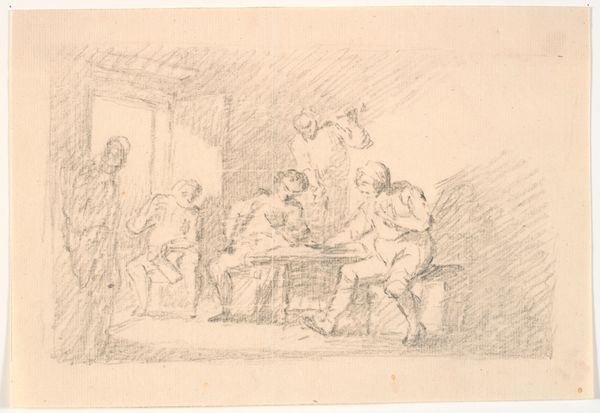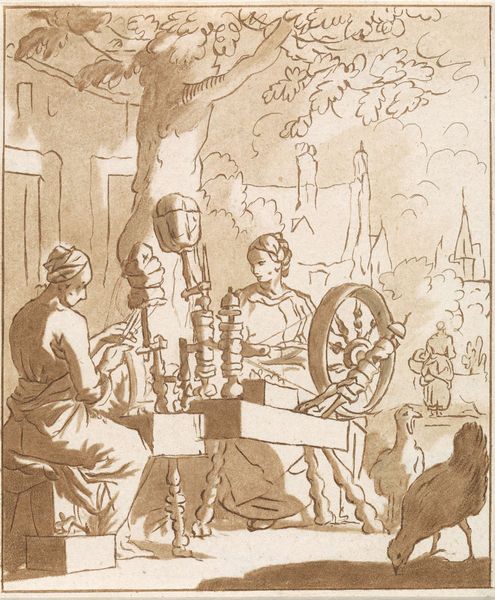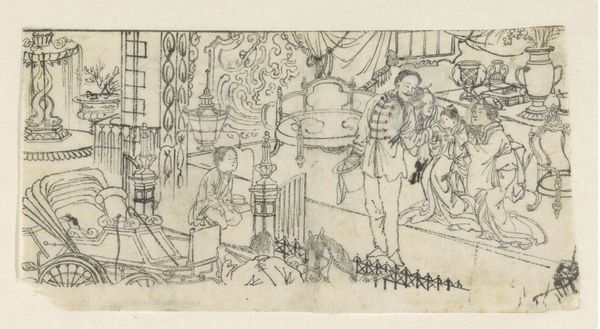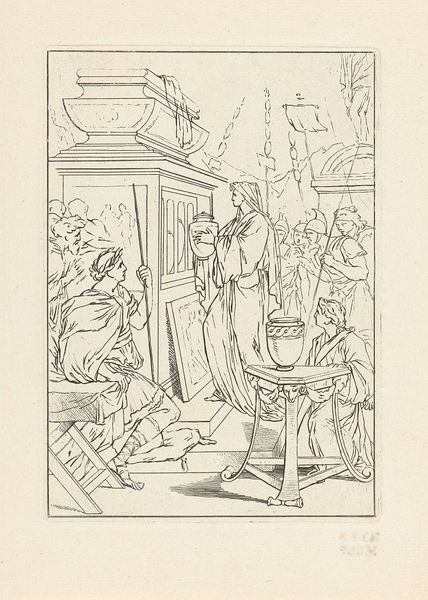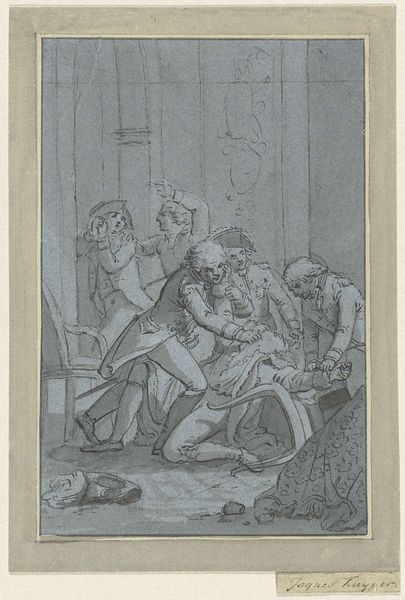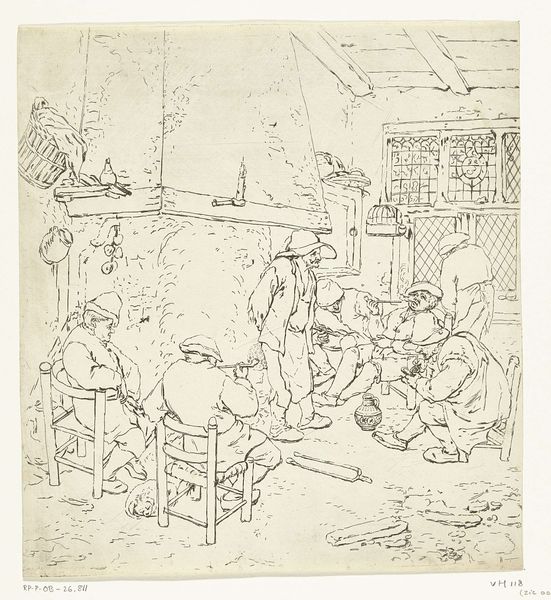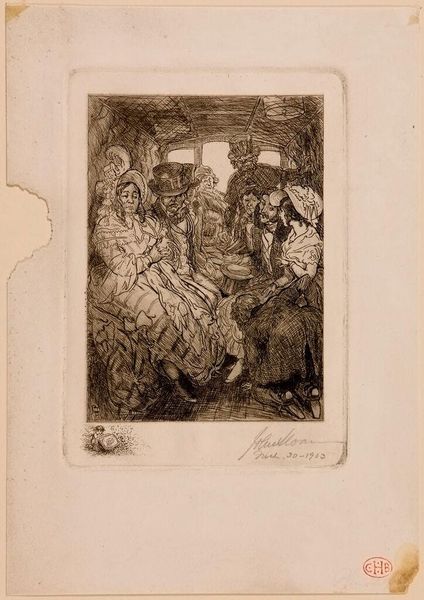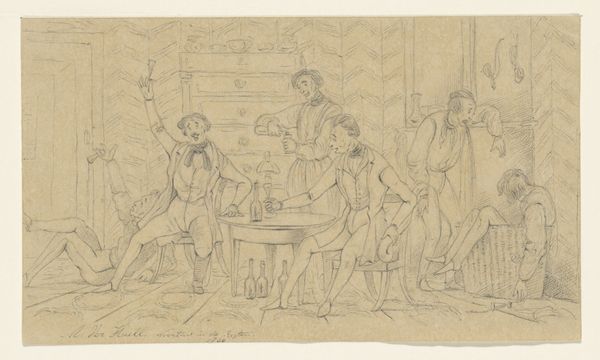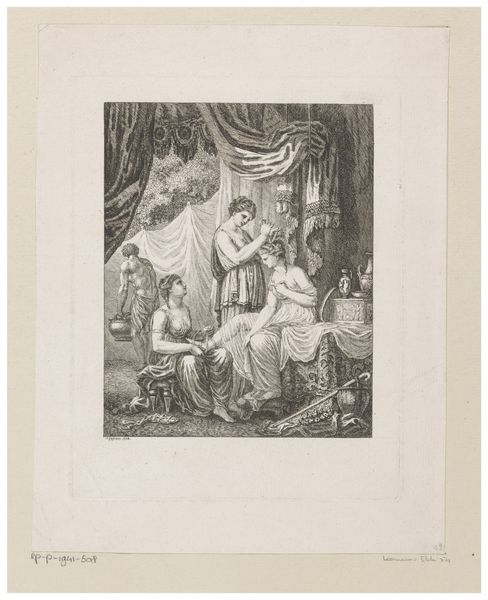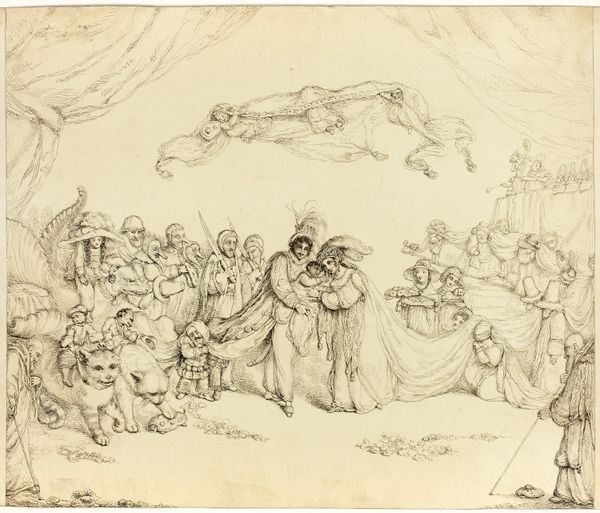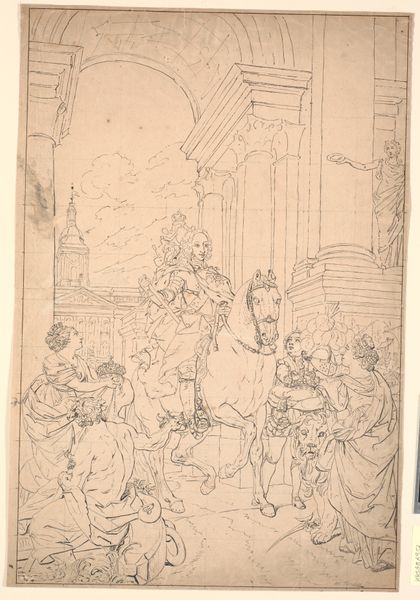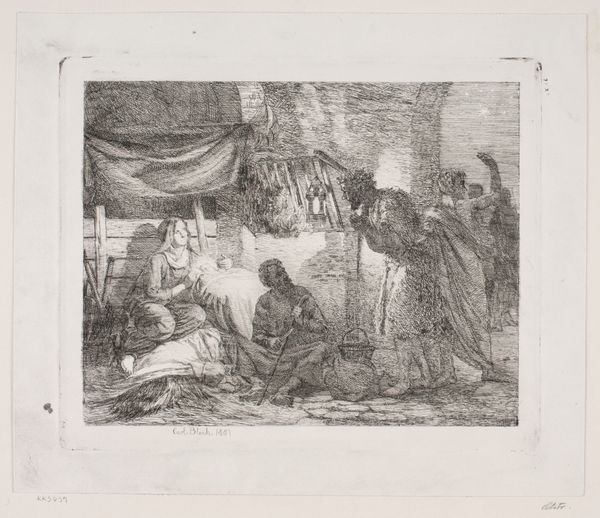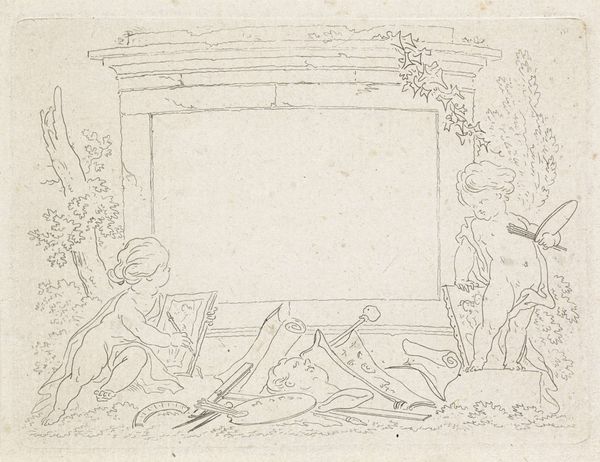
drawing, paper, pen
#
drawing
#
narrative-art
#
greek-and-roman-art
#
landscape
#
figuration
#
paper
#
linocut print
#
line
#
pen
#
genre-painting
#
academic-art
#
realism
Copyright: Public domain
Editor: Here we have "Daphnis and Chloe," a pen drawing on paper by Pierre-Narcisse Guerin. The scene is domestic, but rendered in a style that recalls classical friezes. What do you see in this piece, in terms of its relationship to power? Curator: That's a crucial lens through which to examine Guerin’s work. The apparent innocence of this pastoral scene is deceiving. Academic art like this was often used to reinforce specific social and political hierarchies. The romanticized depiction of the figures, the idyllic setting - these elements often mask a reinforcement of dominant ideologies. Editor: Could you explain more about how it masks those ideologies? Curator: Consider the roles of the figures. How are women portrayed in relation to men? What values seem to be celebrated or normalized in this constructed “natural” world? These choices contribute to the narrative. The figures' passive gazes, their costuming - all contribute to an idealization of specific class structures that were meant to appear natural and timeless, when of course they're very much constructed. Editor: I see, so it’s less about the subject itself, and more about what the subject *implies*. Curator: Exactly. The "genre painting" quality domesticates and normalizes these power dynamics, making them palatable for a wider audience. Also consider who was commissioning and consuming art like this during that period. Understanding the audience helps us unpack the message being conveyed. Editor: That's incredibly helpful, I will definitely look at these pastoral scenes with new eyes. Thank you! Curator: Absolutely, keep questioning the narratives that art presents, especially those that seem “beautiful” or “natural” on the surface. That is where power often resides.
Comments
No comments
Be the first to comment and join the conversation on the ultimate creative platform.
